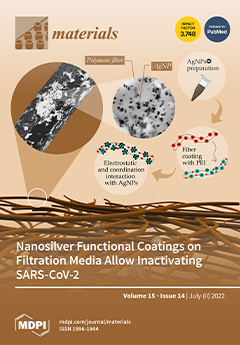Open AccessArticle
Technogenic Fiber Wastes for Optimizing Concrete
by
Sergey Klyuev, Roman Fediuk, Marina Ageeva, Ekaterina Fomina, Alexander Klyuev, Elena Shorstova, Linar Sabitov, Oleg Radaykin, Sergey Anciferov, Diana Kikalishvili, Afonso R. G. de Azevedo, Nikolai Ivanovich Vatin and Mugahed Amran
Cited by 13 | Viewed by 1852
Abstract
A promising method of obtaining mineral fiber fillers for dry building mixtures is the processing of waste that comes from the production of technogenic fibrous materials (TFM). The novelty of the work lies in the fact that, for the first time, basalt production
[...] Read more.
A promising method of obtaining mineral fiber fillers for dry building mixtures is the processing of waste that comes from the production of technogenic fibrous materials (TFM). The novelty of the work lies in the fact that, for the first time, basalt production wastes were studied not only as reinforcing components, but also as binder ones involved in concrete structure formation. The purpose of the article is to study the physical and mechanical properties of waste technogenic fibrous materials as additives for optimizing the composition of raw concrete mixes. To assess the possibility of using wastes from the complex processing of TFM that were ground for 5 and 10 min as an active mineral additive to concrete, their chemical, mineralogical, and granulometric compositions, as well as the microstructure and physical and mechanical characteristics of the created concretes, were studied. It is established that the grinding of TFM for 10 min leads to the grinding of not only fibers, but also pellets, the fragments of which are noticeable in the total mass of the substance. The presence of quartz in the amorphous phase of TFM makes it possible to synthesize low-basic calcium silicate hydrates in a targeted manner. At 90 days age, at 10–20% of the content of TFM, the strength indicators increase (above 40 MPa), and at 30% of the additive content, they approach the values of the control composition without additives (above 35 MPa). For all ages, the ratio of flexural and compressive strengths is at the level of 0.2, which characterizes a high reinforcing effect. Analysis of the results suggests the possibility of using waste milled for 10 min as an active mineral additive, as well as to give better formability to the mixture and its micro-reinforcement to obtain fiber-reinforced concrete.
Full article
►▼
Show Figures






